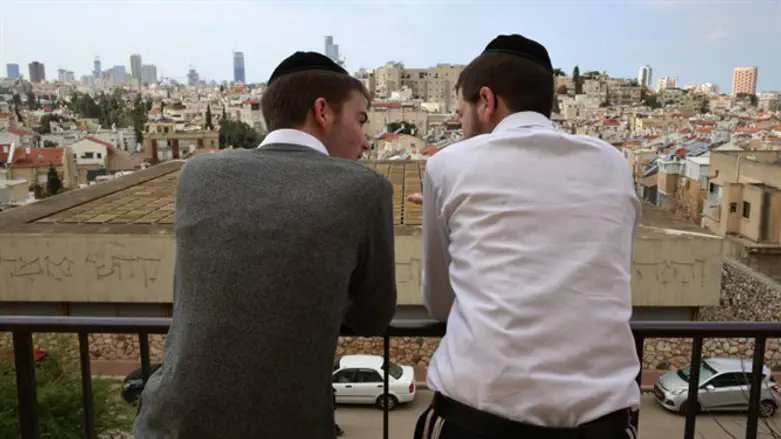
According to the Central Bureau of Statistics (CBS), the percentage of haredi men joining the workforce has come to a standstill for the second quarter in a row. Statistics in percentages can be misleading, however, as the absolute number of haredi men working may have risen and is obscured by population growth which lowers the percentage of those employed.
The percentage of haredi men who currently work is less than 50%, and in the first three months of 2017, only 49.6% of haredi men worked in a recognized workplace. This does not include men who may we working in unrecognized places.
Israeli newspaper TheMarker published these statistics and noted that the CBS has two definitions of 'haredi.' According to the broader definition, the number of haredi men in the workforce stands at 53.4%, still a dramatic drop from 2015's high of 57.5%.
In the last quarter of 2016, the percentage of haredi men in the workforce rose only slightly, after a number of years in which the percentage of working haredi men rose consistently and dramatically.
In fact, the percentage of haredi men in the workforce broke 50% in the second half of 2015.
Meanwhile, the percentage of employed haredi women continues to stay constant at 73%.
When the government began cutting yeshiva stipends during the years 2012-2013 after a suit filed by various organizations including the Reform Movement in Israel on the grounds that it was discriminatory, the number of married yeshiva students dropped by 8% per year. Previously, it had risen by 4% per year.
The reaction to the changes in the percentage of married students is a function of the value placed on Torah study.
Married yeshiva students receive financial support for learning Torah full time. In November 2016, government funding for yeshivas reached an all-time high, costing an additional 48 million NIS per year and bringing the total government outlay to 1.17 billion NIS annually.